|
|
|
|
|
|
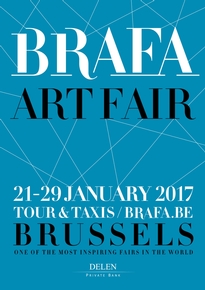
BRAFA17
Brafa is one of the leading European art and antiques fairs. Here, all art works on show are for sale and quality and authenticity are two of the key requirements exhibitors face. Brafa is an eclectic fair which encompasses a variety of specialities, from antiquity to the 21st century, including archaeology, Oceanic art, African art, Oriental art, silver, jewellery, numismatic, furniture and works of art from the Middle Ages to the 21st century, vintage collections, old master and modern paintings, contemporary art, sculpture, earthenware and porcelain, carpets, tapestry, drawings, old comic books, engravings, antique and modern books, photography.
Click here to request more information about this item.
|
|
|
|
|
|
|
|
|
|
|
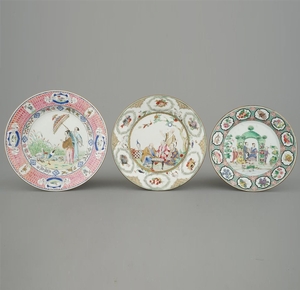
Dishes in ‘Famille Rose’ Chinese porcelain
Chinese Export porcelain : the set of 3 dishes (28 - 26 - 23cm) rassembling the 3 designs made by Cornelius PRONK, in FAMILLE ROSE.
All decorated with a different scene after drawings of Cornelius Pronk (1691-1759). This painter and porcelain designer collaborated, between 1734-1737, with the VOC ‘Verenigde Oost-indische Compagnie’ (Dutch East Indies company) to create new decoration with specific European designs on Chinese porcelain. At the start the VOC asked the Delft workshops to produce models to send to China, but, as it was complicated and too expensive, it commissioned Cornelius Pronk to make drawings
which were reproduced in China and sent back on the « Magdalena » arriving in Amsterdam in spring 1737. He mainly made three design.
The first drawing «The lady with the umbrella », or " La dame au Parasol " on the left, was sent to Canton and also to Deshima. It was produced in blue/white, Famille Rose and Imari in limited amount. The ‘Famille Rose’ execution was by far the rarest and most expensive. The second one « The doctor’s visit to the Emperor », in the middle, and the third one « The harbour », on the right, was only produced in blue/white and Famille Rose. The source of inspiration of Pronk remains unknown and there are only a few other designs attributed to him. By commissioning C. Pronk, the VOC embarked on an expensive, experimental endeavor that resulted in the production of some of the most extraordinary porcelains specially ordered for export to the West . This historic agreement was the first and only one recorded of its type . Never before or since have the designs of one artist had such an effect on the China trade .
To have 3 « Famille Rose » dishes with designs of Pronk together and in perfect condition, as it is the case here, is undoubtly extremely rare.
Click here to request more information about this item.
|
|
|
|
|
|
|
|
|
|
|
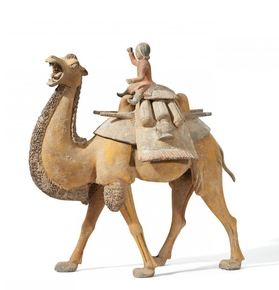
A magnificent pottery CAMEL & RIDER. h : 52 cm.
Superbly modelled . The yellow pigmented grey pottery group depicting a Western - asiatic merchant seated atop a striding forward 2- humped camel ; the whole group in 2 separate parts. The rider shows a non-chinese physionomy, and looks very much as a Sogdian trader. ( Sogdian was an ancient civilization of Iranian people , already since ca. 500 BC ; there was a very lifely trade-route of some 1500 miles between Sogdania and China . )
Period : T A N G dynasty : 618 -960 .
Refer . : "Chinese Porcelain Compagnie ", New York, cat.2003,n°12.
" Ceramic Sculpture from Han to Tang ", G.Eskenazi ( London),
catal. 1997 , n° 14.
The 2- humped bactrian Camel was an exotic beast,known in China from the Han dynasty on, when it was first introduced as a form of tribute offered by the tribes of Turkestan and Central Asia . Priced for their ability to survive extreme hardships of heat,cold and lack of water when travelling across the desert,camels came to symbolise the trade established along the Silk Road, and thus the wealth and cosmopolitan nature of the Tang court. ( the Silk road was a 7.000 miles long route between Asia/ China , and India, to Rome .) This road brought a capital change in daily life of the Chinese. Entertainers, merchants, artists, pilgrims and huntsmen all brought with them exotic goods to trade , and exchanging of ideas, artistic styles and religious beliefs.
The impressive size of the present group ,and the complexity of its manufacture with a massive body raised on elegant,slender long legs, suggests, that it was a very costly piece to commission, indicating that the bereaved family was very wealthy and important.
Realisticaly depicted-with a certain element of caricature - this group is a testemony to the skill of the chinese artist in translating his real-life observations into a lively clay tomb sculpture .
The artist captured a dramatic moment of the camel & rider in motion . He shows a degree of observation of detailed representation , rarely encountered on Tang sculpture !
This must be one of the best Tang pottery sculptures in its kind, ever been on the market !
Click here to request more information about this item.
|
|
|
|
|
|
|
|
|
|
|
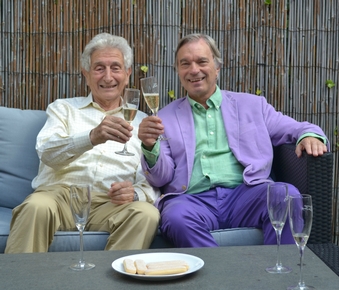
I was absolutely delighted, to welcome one of the most distinguished
and famous dealers in the world, mr . Richard MARCHANT. We know each
other already since 1970 ,when I bought my very first object in chinese porcelain in his gallery in London.
Click here to request more information about this item.
|
|
|
|
|
|
|
|
|
|
|
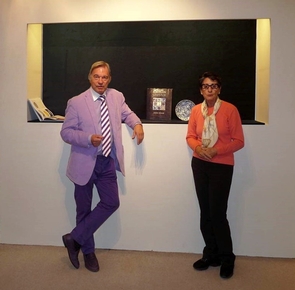
We had a very busy schedule this summer, receiving in our gallery in Bruges distinguished and well-known personalities from the chinese art scene: mr. Steven CHAIT, mr. YANG WENZHUNG , mr. Richard MARCHANT, and recently italian born madame Mauro RINALDI, famous autor of the legendary " Kraak Porcelain" reference book ( 1989). I will present one of the rarest "egret-marked" compotiers at BRAFA16 . It is the only known plate from the Wanli period with an eagle .It is illustrated in her book , plate 263 . Mrs. Rinaldi was very surprised and pleased ,to see this plate back, after some 25 years .
Click here to request more information about this item.
|
|
|
|
|
|
|
|
|
|
|
|
|
|
|
|
|
|
©2025 Marc Michot •
Groene Rei 3, B-8000 Brugge •
Tel: +32 (0)50 339720 •
E-mail: Info@MarcMichot.com
|
|
|